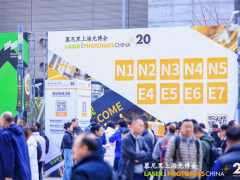據能源之聲2月24日報道,2021年,亞洲可再生能源資產的交易額增長了兩倍多,達到136億美元,交易數量同比增長53%,達到75筆。據研究公司Enerdatics報告稱,值得注意的是,太陽能行業的大型企業合并推動了價值的大幅增長。
該地區最大的一筆交易是阿達尼綠色能源公司以35億美元收購印度SB能源控股公司。該交易涉及1.4吉瓦的運營太陽能產能和2.7吉瓦的正在開發產能。 另一項重大收購是 EDP Renewables 以 8.8 億美元收購新加坡太陽能開發商 Sunseap,該公司為屋頂、地面安裝的公用事業規模和浮動太陽能光伏項目提供建造、擁有和運營戰略。 該公司擁有4.8吉瓦的太陽能開發管道。
Enerdatics表示,太陽能行業在亞洲可再生能源并購領域占據主導地位,2021年占該地區總交易量的66%,總交易額的78%。
根據Enerdatics的數據顯示,2021年,50兆瓦以下資產組合的交易量同比增長了約50%。Enerdatics創始人Mohit Kaul表示,這是由對可再生能源的需求驅動的,以滿足居民用電需求。此外,安裝成本的下降和土地可用性的限制也刺激了小型社區太陽能和屋頂光伏項目的增長。
Kaul補充道,印度和越南等東南亞國家的有利立法舉措也在推動亞洲太陽能業務的擴建。印度政府制定了一個雄心勃勃的目標,即到2030年實現280吉瓦的太陽能裝機發電量。為了實現這一目標,該國已經實施了6億美元的激勵方案,以鼓勵太陽能設備的制造,以及資本補貼、稅收減免和對小型太陽能裝置的PPA擔保。與此同時,由于對發電資產的資本所有權比例缺乏限制,越南可再生能源行業近年來已成為一個對國際投資者有吸引力的市場。此外,強勁的經濟擴張預計將導致該國能源需求大幅增加。該國在2021批準了新的太陽能獎勵措施,包括提高原料(關稅)和屋頂太陽能供應商直接向商業消費者出售電力的能力。
Enerdatics指出,另一個重大發展是與日本和韓國等東南亞國家形成戰略關系,目標是發展大型海上風電項目。Equinor和TotalEnergies道達爾等石油巨頭、貝萊德(BlackRock)、哥本哈根基礎設施合作伙伴(Copenhagen Infrastructure Partners)和麥格理(Macquarie)等私募股權公司,以及SSE、Iberdrola和JERA等經驗豐富的電力公司,都組建了合資企業,以在該地區建立立足點。
政府的雄心正在推動這些國家海上風電項目的開發,比如日本到2030年部署10吉瓦的海上風電裝機發電量,到2040年部署30-45吉瓦的海上風電裝機發電量,其中包括浮動風。
Enerdatics稱,浮動太陽能是另一種正在探索的海上部署技術,在印度、新加坡和印度尼西亞等國越來越受歡迎。2021年7月,可再生能源公司Sunseap與印尼項目開發商BP Batam合作,在巴淡島海岸外創建了一個2.2吉瓦的浮動太陽能項目,使其成為該地區正在開發的最大的浮動太陽能項目。在土地資源有限的地區,鼓勵開發優惠的清潔能源,是推動亞洲浮動太陽能裝置興起的因素之一。
郝芬 譯自 能源之聲
原文如下:
Asian renewable energy deals triple to $13.6bn in 2021
The deal volume for renewable energy assets in Asia more than tripled to $13.6 billion in 2021, as the number of transactions surged by 53% year-on-year to 75. Significantly, large corporate mergers in the solar energy sector fuelled the considerable increase in value, reported Enerdatics, a research company.
The largest deal in the region was Adani Green Energy’s $3.5 billion purchase of India’s SB Energy Holdings. The deal involved 1.4GW of operational solar capacity and 2.7GW of capacity under development. Another significant acquisition was EDP Renewables’ $880 million purchase of Singapore-based solar developer Sunseap, which offers a build, own, and operate strategy for rooftop, ground-mounted utility-scale, and floating solar PV projects. The company has a solar development pipeline of 4.8 GW.
The solar sector dominates the renewables mergers and acquisitions (M&A) landscape in Asia, occupying a 66% share of the total deal volume and a 78% share of the aggregate deal value in the region, in 2021, said Enerdatics.
Transactions for sub-50MW portfolios of assets surged by about 50% year-on-year in 2021, according to Enerdatics data. “This was driven by the need for renewable energy sources to satisfy residential electricity demand. Further, declining installation costs and land availability constraints are also stimulating the growth of small-scale community solar and rooftop PV projects,” said Mohit Kaul, founder, Enerdatics.
“Favorable legislative moves by nations in Southeast Asia, such as India and Vietnam, are also driving expansion in the solar business in Asia. The Indian government has set an ambitious goal of 280 GW of solar installations by 2030. To meet this goal, the country has put in place $600 million in incentive programmes to encourage the manufacture of solar energy equipment, as well as capital subsidies, tax breaks, and PPA guarantees for small-scale solar installations,” added Kaul.
“Meanwhile, due to the lack of constraints on the capital ownership percentages of power generating assets, the Vietnamese renewable energy sector has become an attractive market for international investors in recent years. Furthermore, strong economic expansion is expected to result in a large increase in the country’s energy demand. The country authorised new solar energy incentives in 2021, including improved feed-in-tariffs (FiTs) and the ability for rooftop solar providers to sell power directly to commercial consumers,” said Kaul.
“Another significant development is the formation of strategic relationships in Southeast Asian countries such asJapan, and South Korea, with the goal of developing large-scale offshore wind projects. Oil majors like Equinor and TotalEnergies, private equity firms like BlackRock, Copenhagen Infrastructure Partners, and Macquarie, as well as experienced power utilities like SSE, Iberdrola, and JERA, have formed JVs to establish a foothold in the region,” noted Enerdatics.
Government ambitions, such as Japan’s goal of deploying 10 GW of offshore wind capacity by 2030 and 30-45 GW by 2040, including floating wind, are driving the development of offshore wind projects in these countries.
“Floating solar is another technology being explored for offshore deployment, and it is gaining popularity in nations such as India, Singapore, and Indonesia. Renewables company Sunseap teamed up with BP Batam, an Indonesian project developer, to create a 2.2 GW floating solar project off the coast of Batam Island in July 2021, making it the region’s largest floating solar project under development. Incentivising the development of affordable clean energy in areas with limited access to land resources is one of the factors contributing to the rise of floating solar installations in Asia,” said Enerdatics.
免責聲明:本網轉載自其它媒體的文章及圖片,目的在于弘揚石化精神,傳遞更多石化信息,宣傳國家石化產業政策,展示國家石化產業形象,參與國際石化產業輿論競爭,提高國際石化產業話語權,并不代表本網贊同其觀點和對其真實性負責,在此我們謹向原作者和原媒體致以崇高敬意。如果您認為本站文章及圖片侵犯了您的版權,請與我們聯系,我們將第一時間刪除。







